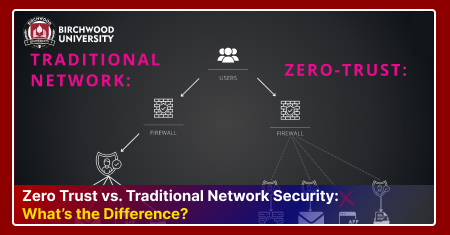How Can I Protect Myself From Deepfakes?
May 7, 2024We are now living in a time of unprecedented connectivity and information exchange owing to digital technology. However, this interconnectedness has also created a fertile ground for a new breed of misinformation: deepfakes. Deepfakes are synthetic media, typically videos or audio recordings, manipulated using artificial intelligence (AI) to make appear as if a person is saying or doing something they never did.
The potential consequences of deepfakes are far-reaching. They can be used to damage reputations, sow discord, manipulate financial markets, and even influence elections. This blog post delves into the world of deepfakes, exploring the technology behind them, their potential dangers, and most importantly, practical steps you can take to safeguard yourself in the digital landscape.
Understanding Deepfakes: How Do They Work?
Deepfakes leverage a branch of AI known as deep learning. Deep learning algorithms are trained on massive amounts of data, allowing them to identify patterns and replicate them. In the context of deepfakes, the data can consist of images, videos, and audio recordings of a target person. By analyzing this data, the algorithms learn the nuances of the person's facial expressions, speech patterns, and mannerisms. This information is then used to manipulate existing footage or create entirely new content featuring the target person.
The sophistication of deepfakes varies greatly. Some deepfakes may be crude and easily identifiable, while others can be remarkably convincing, even to the trained eye. As deepfakes technology advances, the line between reak and fabricated content is likely to become increasingly blurry.
The Dark Side of Deepfakes: Potential Threats
Deepfakes are serious danger to people and the wider community. Some of the most worrisome scenarios are listed below:
- Reputational Damage: Deepfakes can be used to create compromising or embarrassing videos of individuals, potentially damaging their personal and professional lives.
- Financial Fraud: Deepfakes could be used to impersonate executives or other authority figures to manipulate financial markets or steal sensitive information.
- Social Disruption: Deepakes can be used to spread misinformation and propaganda, sow discord within, communities, and erode trust in institutions.
- Political Interferences: Deepfakes could be used to manipulate voters by fabricating incriminating content about political candidates or portraying them in a false light.
These are just a few examples, and the political applications of deepfakes for malicious purposes are constantly evolving.
How to Spot and Mitigate Deepfakes:
While no foolproof method exists to identify every deepfake, there are steps you can take to become a more discerning consumer of online content. Here are some key strategies to fortify your defenses:
- Critical Thinking: Don't blindly accept everything you see online at face value. Approach sensational or controversial content with a healthy dose of skepticism, especially if it originates from unfamiliar sources. Always question the motive behind the content and its source.
- Verification: Before sharing or reacting to a video or audio clip, prioritize verification. Look for corroborating evidence from trusted sources. Conduct reverse image searches or utilize online deepfake detection tools.
- Scrutinize for Inconsistencies: Pay close attention to details within the content itself. Look for unnatural movements, glitches in lighting, or skin tones, inconsistencies in speech patterns, or any other anomalies that may suggest manipulation.
- Source Awareness: Be wary of content from unverified or unreliable sources. Seek out information from established news outlets with a reputation for fact-checking and rigorous editorial processes.
- Diversify Your Media Consumption: Develop healthy habits for media consumption. Diversify your news sources and be mindful of the algorithms that curate your online content. Don't rely solely on a single platform or source for information.
By adopting these practices, you can become a more critical consumer of information and less susceptible to the manipulative power of deepfakes.
Combating Deepfakes in the Digital Age
The field of cybersecurity plays a vital role in the fight against deepfakes. Cybersecurity professionals develop and implement strategies to protect individuals and organizations from cyberattacks, including those that leverage deepfakes. Here's how cybersecurity contributes to the fight against deepfakes:
- Developing Detection Tools: Cybersecurity researchers are at the forefront of developing advanced algorithms to detect deepfakes. These tools can analyze various aspects of video or audio clips, such as facial movements, lip-syncing, and audio patterns, to identify signs of manipulation. As deepfake technology evolves, so too do these detection tools, employing machine learning and other advanced techniques to stay ahead of the curve.
- Promoting Media Literacy: Cybersecurity professionals play a crucial role in educating the public about deepfakes and how to spot them. This includes raising awareness about the technology, its potential dangers, and the strategies outlined above for critical consumption of online content. By empowering individuals with knowledge, cybersecurity professionals can create a more informed and vigilant digital citizenry.
- Strengthening Online Security: Core cybersecurity practices such as using a strong password, enabling multi-factor authentication, and practicing data encryption can significantly hinder attempts to create deepfakes. Strong passwords make it more difficult for unauthorized individuals to gain access to personal information and data that could be used to create deepfakes. Multi-factor authentication adds an extra layer of security, requiring not only a password but also a secondary verification step, such as an extra layer of security, requiring not only a password but also a secondary verification step, such as a code sent to your phone. Data encryption scrambles your data, making it unintelligible to anyone without the decryption key, further protecting your personal information.
The MS on Cybersecurity: Building a Career
There is a growing demand for qualified cybersecurity specialists as the threat landscape changes. An MS in Cybersecurity equips you with the knowledge and expertise needed to combat sophisticated cyber threats like deepfakes. Here's what an MS in Cybersecurity can offer:
- In-Depth Knowledge: A master's program looks into cybersecurity concepts, covering areas like cryptography, network security, digital forensics, and threat intelligence.
- Advanced Skills Development: You'll gain hands-on experience with the latest tools and detection algorithms and other relevant technologies.
- Career Advancement: An MS in cybersecurity opens doors to a wide range of career opportunities in various industries. You could work for a cybersecurity firm, a government agency, or a large corporation, helping to protect critical infrastructure and data from cyber threats.
Conclusion:
The fight against deepfakes requires a collective effort from individuals, technology companies, and governments. By adopting secure online practices, we can build a more resilient ecosystem.







